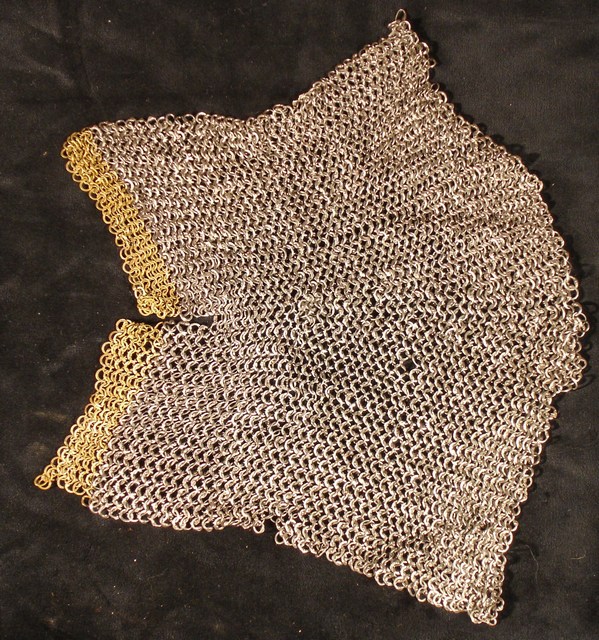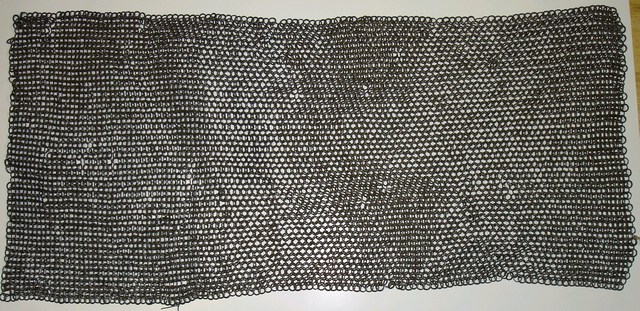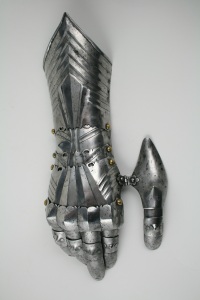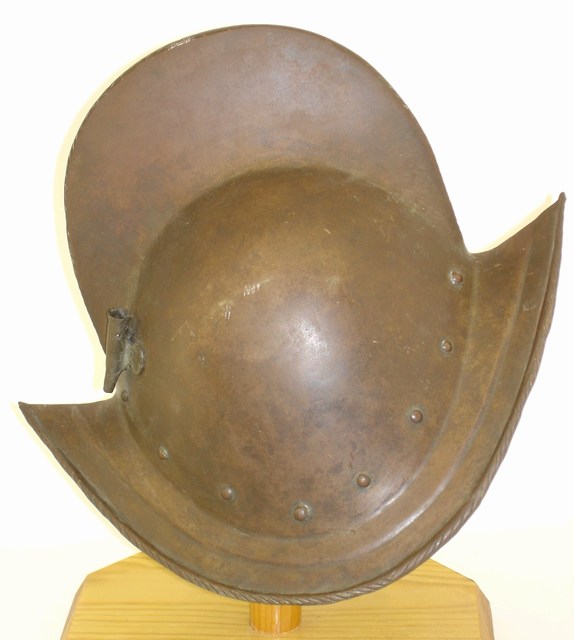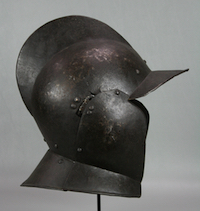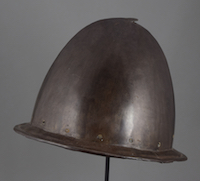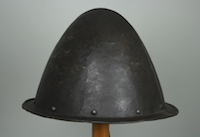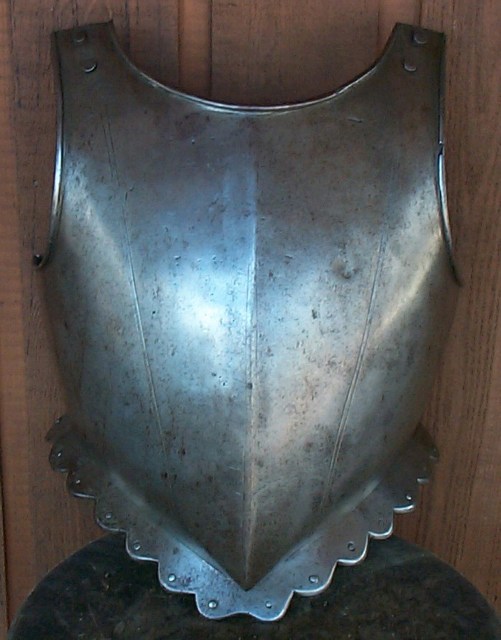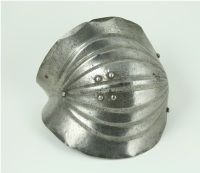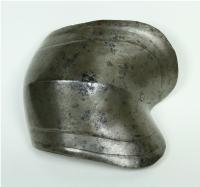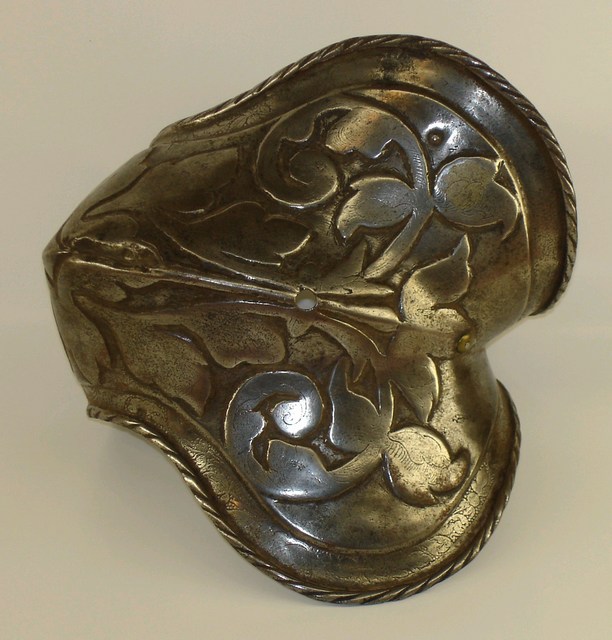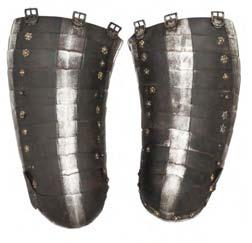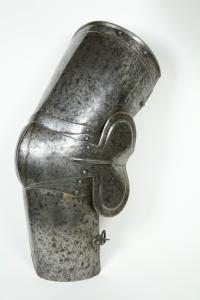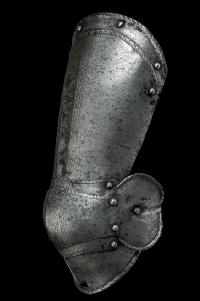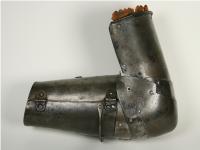 |
Arm circa 1430
Extremely rare example of a 15th c. piece of armour. Arm for the left arm. Perhaps from the fortress at Chalcis (Negroponte). Formed of a tubular upper cannon that wraps two thirds of the way around the arm connected to a bluntly-pointed cop with an abbreviated wing by one lame. The cop is then connected to a tulip-shaped vambrace formed of two pieces hinged on the outside by hinges and secured by a strap and buckle on the inside. The cop is connected to the vambrace by two lames. The second lame is attached to the vambrace by means of 3 lateral slots allowing the arm to rotate. The lower edge of the vambrace is bordered by a line of small rivets. The lower cannon is marked by an indistinct maker's mark involving a split cross. The upper edge of the upper plate with a narrow, outward-turned roll and a line of rivets securing a (later) leather used to lace the armour to the arming doublet. The inner plate of the vambrace, one lame, lisiere d'arret, one half of one hinge, and all of the rivets replaced. The character of these restorations is similar to the restorations on the Rhodes pieces in the Royal Armouries. Given Claude Blair's association with the Royal Armouries and the presence of the letters HRR on the inside of the inner vambrace plate it is likely that this piece was restored there (HRR almost certainly represents H. Russell Robinson). From the personal collection of Claude Blair. For similar examples see Stephen V. Granscay, The Bashford Dean Collection of Arms and Armour...., 1933, nos. 76-81, pl. V. The most detailed record of the pieces discovered at Chalcis see C. J Ffoulkes, An Italian Armour from Chalcis in the Ethnological Museum at Athens, Archaeologia, LXII (1911) pp. 381-390. Measurements 39 cm long. The arm is 15 in. long overall when straight, upper cannon 5 1/2 in. tall at the center of the cop, 4 5/16 in. wide at the top, 4 3/16 in. wide at the bottom. The upper cannon is 8 1/8 in. around the circumference. The roll at the top of the upper cannon is 1/8 in. tall and 3/16 in. deep. Lower cannon 7 1/4 in. long at the center of the cop, 3 7/8 in. wide at the elbow, 2 5/8 in. wide at the wrist. The cop 3 1/4 in. tall at the center, 2 in. tall at the wing, 1 1/2 in. tall at the back. The slots in the vambrace for rotation are 5/8 in. wide. The hinges are 3/4 in. wide, the upper one is 1 3/8 in. long. The inside measurements of the buckle are 3/4 in. on the wide side of the trapezoid, 5/8 in. on the short side and 5/16 in. tall. The thickness varies significantly. The upper cannon is .040-.090 in., mostly .050-.070 in. The thickest part in the center. The cop is .050-060 on the back and .070-.080 on the front. The outer plate of the lower cannon is generally .070-.080 in the upper center and .050-.060 near the wrist. The upper lame is app. .030 in. and the lower one .040 in. Weight 2 pounds 7.2 ounces (1,110 g). [inv. num. A-186]
|
